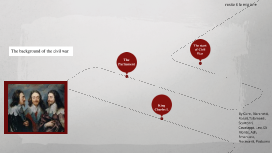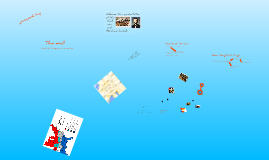Civil War Presentation
Transcript: May 1864, Ulysses S. Grant raided Virginia, William T. Sherman was demanded to post his 100,000 troops in Chattanooga, Tennessee to book and annihilate the Confederate army that was stationed westward. Confederates were demanded to depart to Atlanta, Georgia, though Sherman had already apprehended in September and settled until November, then he commanded the city to be retreated and demolished. William's plan to divide the South a second time was to strike into enemeies territory and live off of their land. Sherman's men marched southeast for a month and deconstructed about sixty miles through one of the wealthiest parts of the South. Overall, they destroyed about $120,000,000 worth of damage. When he reached Savannah on Dec. 20th, he found out that around Nashville, Tenn. General George Thomas has annihilated the western Confederate army. Now, the war in the west was done. Around Feb. 1865, Sherman and his men left Savannah and they marched north up to North and South Carolina and demolished everything in his way. Later, he planned to meet Ulysses S. Grant in Richmond, Virginia. Overall, there were about 31,000 casualties. Grant had a daring plan, his plan was to march his men down the west bank of Mississippi (below Vicksburg), he started inland. The Union had reached Jackson, Mississippi. Then, the battle of Vicksburg began. After the battle, Vicksburg finished on July 4th. The Union caught Vicksburg. The Confederates gave in because they were starving, the main food producers cut them off. In the beginning of 1864, Lincoln commanded William T. Sherman and Ulysses S. Grant to kill Robert E. Lee. The Union suffered 10,000 casualties. The South suffered 9,091 casualties and had 29,495 men surrender. In Sept. 1862, Robert E. Lee was planning on attacking Washington D.C., from the north and demolish Northern morale. 45,000 of his men fell into Maryland, then Lee made two groups from his army. McClellan was supposed to protect Washington by staying in between Robert E. Lee and the capital, although they were being pursued. Lee was attacked on Sept. 17th, 1862 by McClellan because McClellan found out Lee's plan. Lee was attacked in Antietam Creek. McClellan made Lee retreat back to Virginia. The confederates had more than 11,000 deaths, McClellan had more, his army was suffering too much to fight Lee and finish him. 23,000 soldiers were killed, wounded or missing after twelve hours of savage combat on September 17, 1862. Union forces were beaten by the Confederates in Chancellorsville. Lee was encouraged to go north to Pennsylvania. The Union commanded by George G. Meade followed Lee's army. Small units of armies accidentally collided turning into a gory clash which caused the climax of the war. Confederates tried to dislodge the Union from the high ground. Confederates charged the Union with everything they had. The results were left with 23,000 Union soldiers dead, and more than 28,000 soldiers from the Confederates were left dead or wounded. Lee left for Virginia on July 4th. Gettysburg Antietam Sherman's March Vicksburg

















